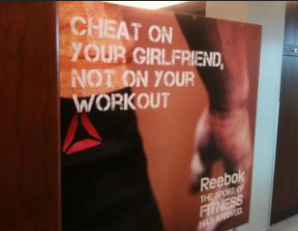Advertisements and their use of images, for some reason does not stir up enough talk of controversy amongst society. We see many sexist, raciest, and patriarchal meanings in ads, yet, most people overlook them. Ads like the following Beats pill add:
http://www.youtube.com/watch?v=fbtewxfcptw
in addition to the controversial song by Robin Thicke “Blurred Lines”, this ad is advertising a popular brand name “Beats” new product, the Beats pill for radio shack. They do this by making it an accessory for the women in the video. The women who are also barely clothed and being playful with the objects and dancing around a fully clothed man somehow avoided a lot of controversial talk. On top of the representation of women and sex, in large font the text and campaign of the whole ad reads “#UWANTIT”. This feeds into the representation of sex and women in the ad. You see attractive women dancing around using the Beats pill, you want it because you see the sex appeal of the women. The commercial has nothing to do with the product other than trying to sell using sex appeal.
American Apparel, a clothing company familiar to almost all in our culture, put a double standard in one of their ads: 
This ad is for unisex flannels, the man however is wearing it in a classy fashion, buttoned up, tucked in and looking nice. However, the woman is wearing it without anything underneath, unbuttoned and has a lot of skin showing. The fact that the woman is depicted differently than the man is sexist. Why is it that the man has to look classy and the woman advertised using sex appeal? Both genders could be doing the same exact thing to sell their unisex product.
Here’s an ad for DC Metro that is clearly sexist: 
Here they are advertising their Metrobus improvements with two women talking. However one of the women in the photograph is saying “Can’t we just talk about shoes?” It could have been fully intentional, maybe it was supposed to make people laugh about it. But this sexist image got people talking. Saying that all women want to talk about are shoes. It even takes up most of the advertisement. The actual information they are trying to get out is in way smaller font bellow the main conversation, and even starts off with “We get it. You’re probably not talking about our increased bus reliability. Why would you?” Clearly they are know they are making a little joke about conversations, but the fact that they used the idea that women want to talk about shoes rather than anything else is a perfect example of sexism in advertisement. It could have easily been fixed if they had made the girl say “Can’t we talk about something else?” and the rest of the ad would have been okay.
Most of the ad examples I’m running into in my search seem to always focus on women. This ad campaign from Rebok “Cheat on your girlfriend, not on your workout” says a lot more than just that. In addition to disrespecting women, there’s a very patriarchal message here. The idea that your body as a man is more important that your long term relationship feeds into the minds of men who think that they need to bulk up their body no matter what and that women are not on the same level as that. Although this ad was only in Germany, social media was able to make this ad available across the world for others to see and judge. It honestly baffles me how ads like these even get approved.
Like this clearly racist one by one of my favorite companies, Sony. Their ad campaign in the Netherlands “PSP White is coming” has a very touchy subject matter. This ad was for the import of a white colored version of the original black Playstation Portable, their handheld gaming device. However the ad shows a woman in all white with her hand grasping a black woman’s face. This ad screams racism, the controversy of “white supremacy” spread across the world. They probably didn’t even need to have any people in the ad. But the fact that a “white” woman seemed to be dominating a “black” woman is pure racist.
Why is it that there isn’t some sort of screening process for advertisements? Like the MPAA for film or ESRB for games there should be something for ads.

